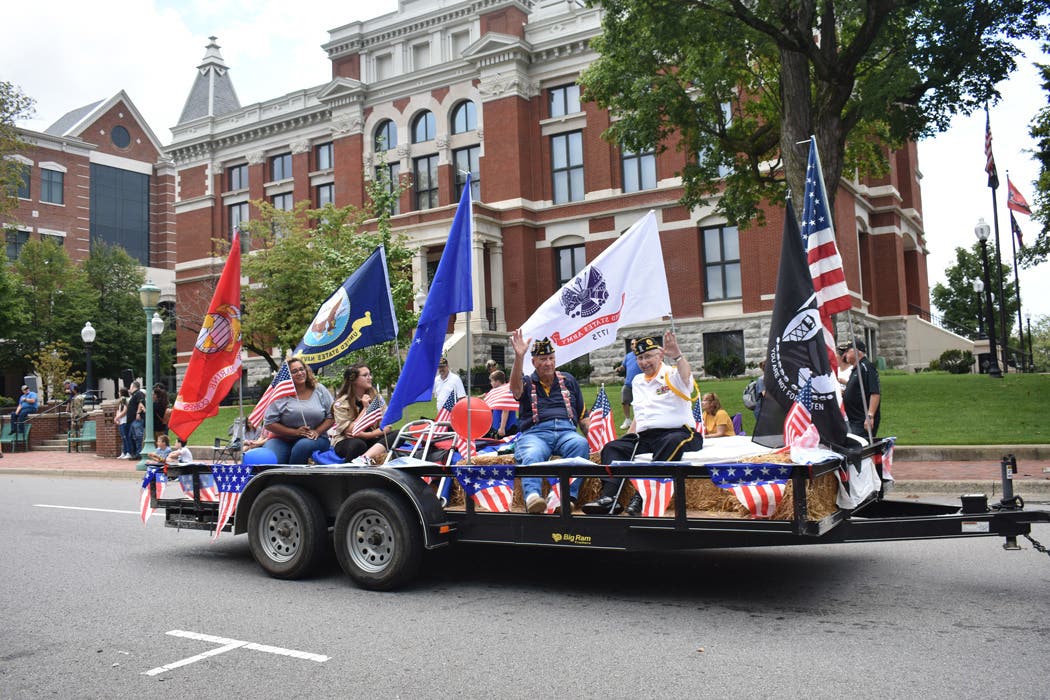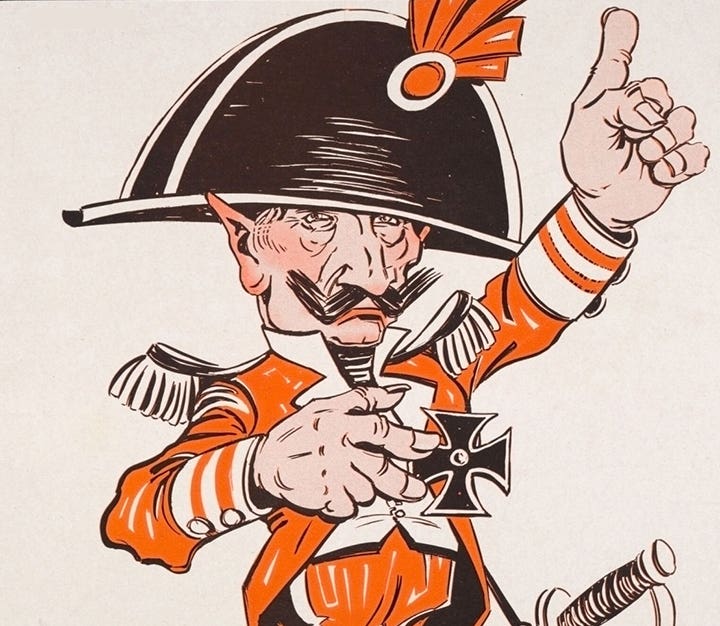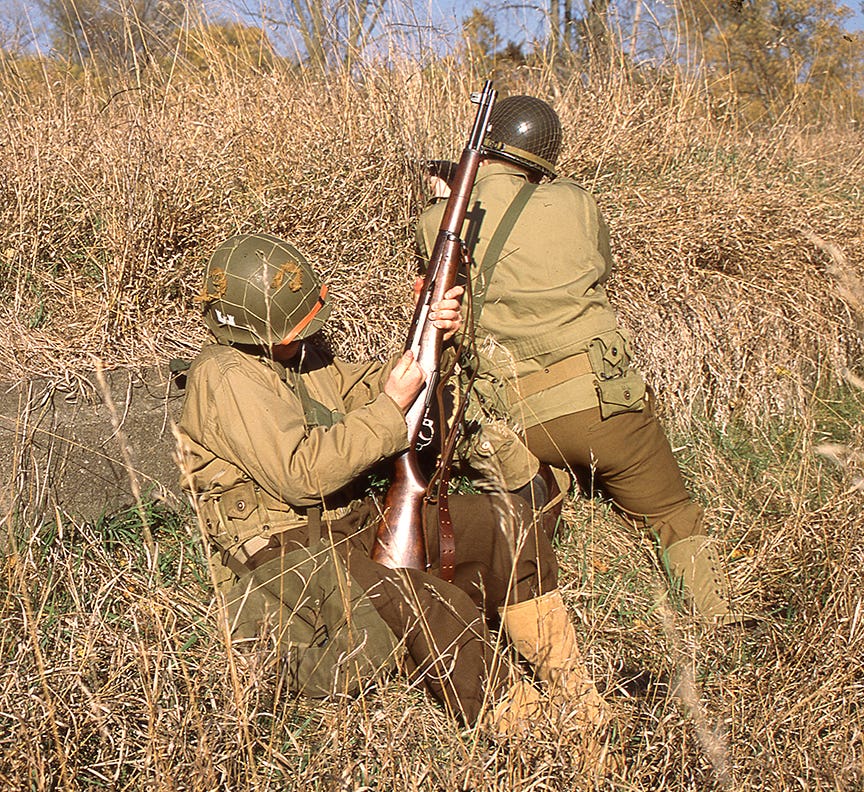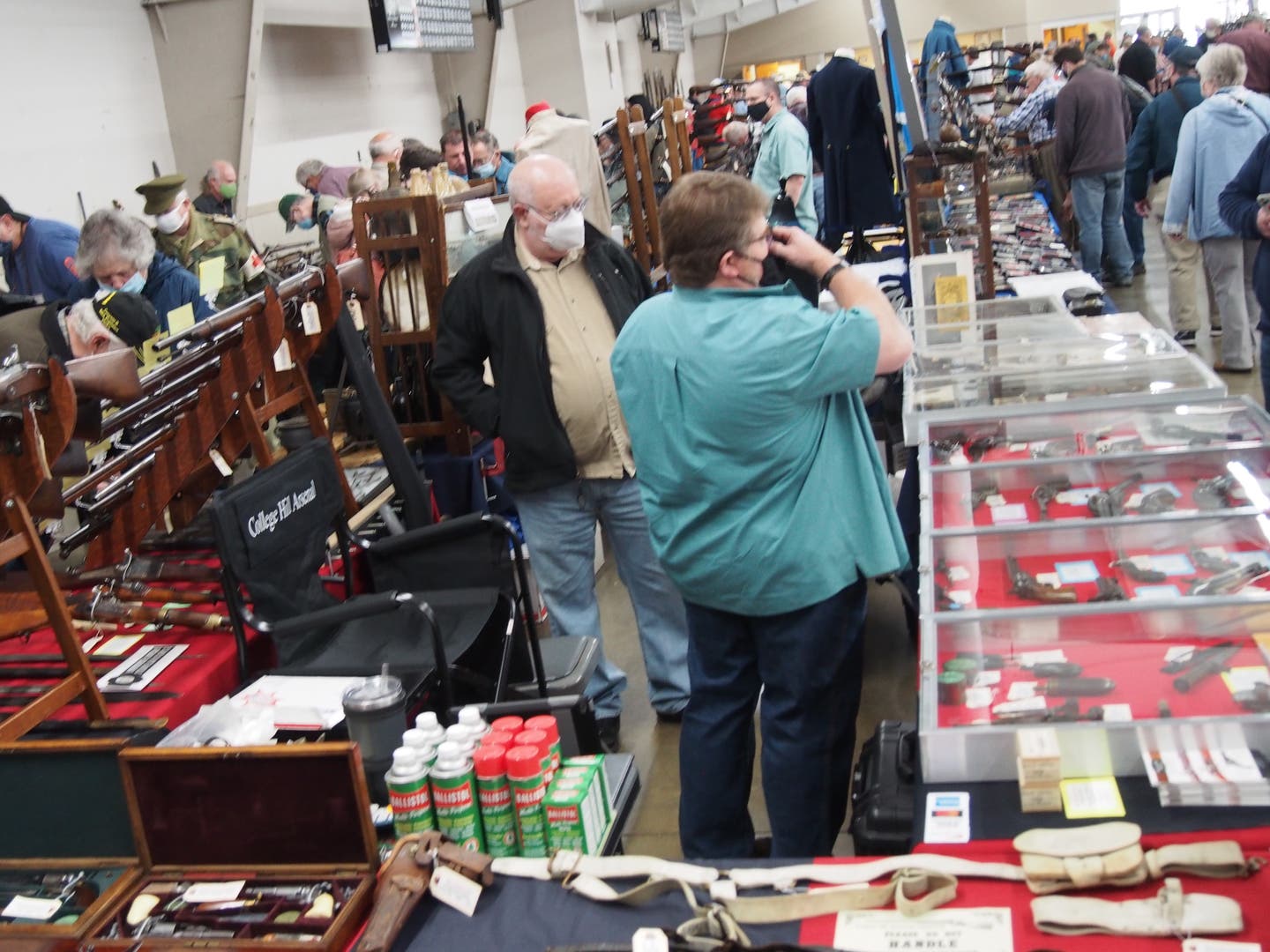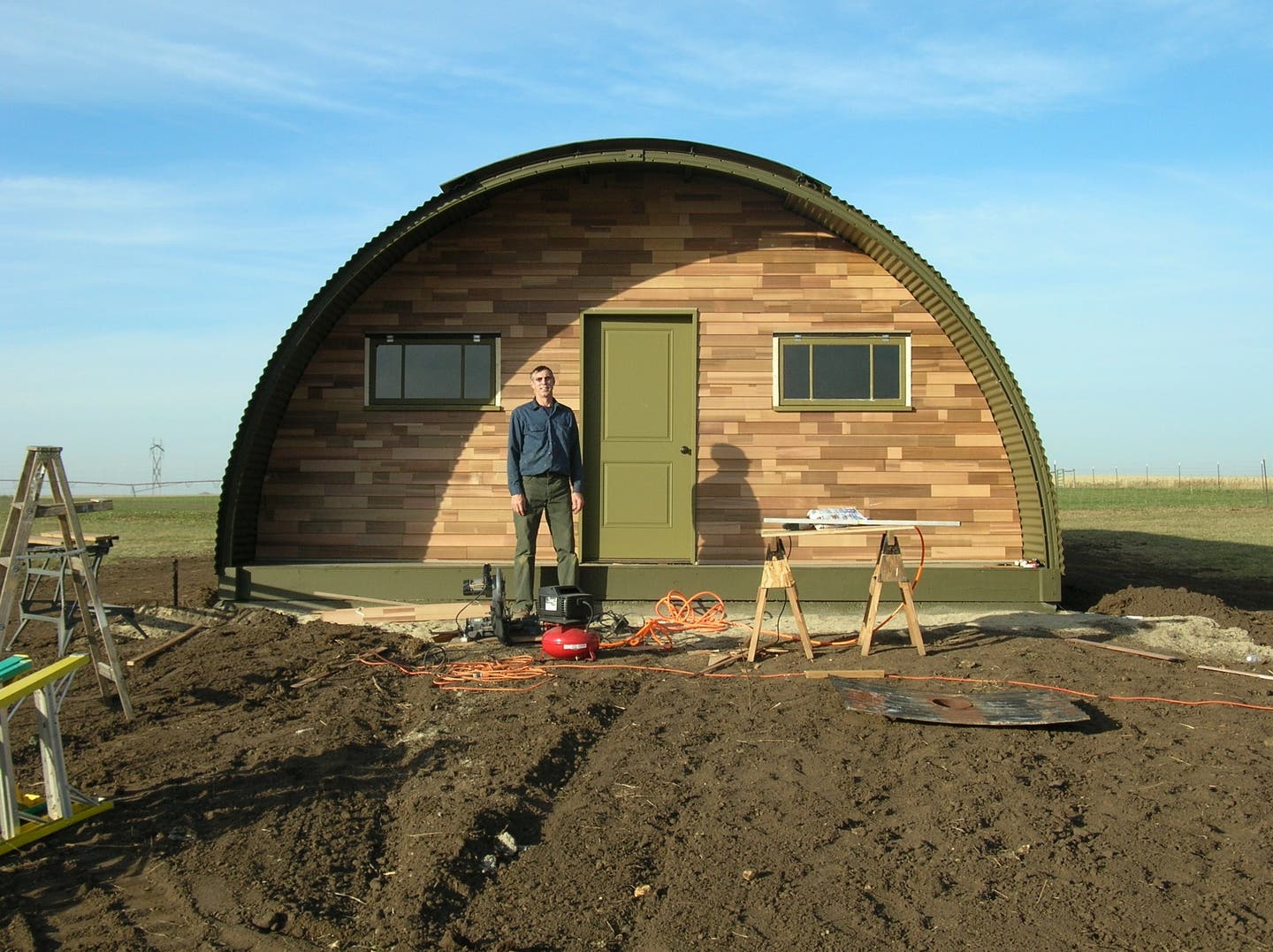Familiar Faces!
Some reenactors go the extra mile to bring famous military figures to life.
Reenactment groups are known for their high levels of accuracy and attention to detail when it comes to recreating depictions of famous military units. For example, many displays of the American 82nd and 101st Airborne Divisions are first rate, just as they should be, because, after all, they are in effect doing honor to the memories of those men who served during WWII. In Britain, even the depiction of the so-called “line regiments” — ordinary infantry units such as the Somerset Light Infantry or Gloster Regiment — are turned out with equal attention to detail, because these, too, have long histories stretching back many hundreds of years in some cases. Armored units of WWII are also depicted, using vehicles of the period, such as British XXX Corps, U.S. 2nd Armored Division and the specialized British 79th Armored Division with M4 Sherman tanks or Churchill tanks.
Such high levels of authenticity have been achieved through years of collecting original items and research to recreate authentic uniforms and mark up vehicles with the correct markings for their unit. Some groups have members who have an uncanny resemblance to a famous wartime figure, and on the right occasion they will appear dressed accordingly. Many of these famous faces would have been well-known through newsreels shown in cinemas, which was the social media of the day. Photographs appearing in newspapers and magazines showing leading figures brought them to the attention of millions of people in a way never before imagined. In this way, military leaders became well known; some received nicknames, a which reinforced their profile with the public. For example, General Eisenhower became known as “Ike” to the men under his command, the general public and the press.
At reenactment events, historical figures make appearances and walk freely among the visiting crowds. One of the more instantly recognizable figures in the U.K., of course, is Churchill, wearing his distinctive homburg hat, smoking a cigar and completed by his signature two-fingered trademark “V” for victory signal. Such details were picked up by the press and circulated in cinema newsreels and led to the public referring to him simply as “Winny”. Prior to 1941 Churchill was not widely known in America, but after Pearl Harbor his face appeared with frequency in newspapers and newsreels with the American public also calling him Winny.
In 1940, General Bernard Law Montgomery was commanding 3rd Division but two years later he was defeating the Germans in North Africa and had acquired the nickname of “Monty”. Whenever either or both of these recreated figures turn up at events it makes for a terrific photo opportunities for visitors. The same holds true for look-alike leaders from France, the U.S. and Russia.
Civilian leaders from the period, such as Paul Reynaud, President Roosevelt and Neville Chamberlain, can be achieved by wearing clothes of the period. For military leaders, such as French General Charles de Gaulle, accuracy in uniform and the medal ribbons needs to be perfect. Reenactors know about the Axis leaders, but for reasons of sensitivity they generally avoid these figures and stay with the Allied interpretations.
However, two acceptable German figures to be depicted are Erwin Rommel, who requires no introduction, and Adolph Galland, the fighter ace and Generalleutnant of the Luftwaffe who sometimes makes an appearance with his pet spaniel called “Schweinebauch” (Pork Belly), to inject some humor into a serious subject. Rommel was a professional soldier and highly regarded by Allied commanders and soldiers alike and seeing his interpretation at shows is tolerated. Other than these two figures, only generic representations of German officers are depicted at shows.
On occasion, Churchill wore military uniform, but he was often seen in photographs in a “boiler-suit” style outfit, which he called his “siren suit”. British King George VI also wore a military uniform and a British re-enactor sometimes turns up at a show wearing either Royal Air Force or Royal Navy uniform. His is on occasion accompanied by his re-enactor wife Queen Elizabeth, who would later become the Queen Mother, and their re-enactor daughter, Princess Elizabeth. During the war the young princess joined the Auxiliary Territorial Service, ATS, learning to drive an Austin K2Y ambulance and training in mechanical maintenance of the vehicle.
Such appearances have to be organized in advance because it would be embarrassing if several King George VI or Montys turned up at the same event.
There are the less familiar faces also, but sharp-eyed observers may spot them, such as US Major General Walter Robinson, commanding the 2nd Infantry Division during the Normandy campaign. British Field Marshal Alan Brook, later Lord Alanbrook, held the position of Chief of the Imperial General Staff, but was influential in high-level decisions and the man behind Montgomery being promoted. The French commander of the 2nd Division Blindée, General Phillipe Leclerc, has been seen at shows from time to time, as has Jan Smuts, the Prime Minister of South Africa. More instantly recognizable, is Marshal Joseph Stalin, seen wearing a plain tunic to which is pinned the Gold Star. The moustache makes him stand out and his smoking pipe completes the image.
While British officers were by their nature rather reserved and inclined to avoid publicity — with the exception of Montgomery, who courted the Press at every opportunity — American commanders were dynamic and became household figures through the media coverage they received. General George S. Patton became famous worldwide. In Britain, one of the leading depictions of Patton is comes from George Kimmins, who has been portraying the general for many years. In fact, his depiction is so highly rated that it has won him praise from Patton’s grand-daughter, Helen Patton, and the two have been photographed together many times.
Generals Eisenhower and Omar Bradley make regular appearances at shows and join in with photo opportunities. General Douglas MacArthur served in the Pacific Theatre of Operations, but his face would have been known through newsreels and newspaper. He is well known to military enthusiasts and re-enactors, with his familiar sunglasses and corn cob pipe.
Reenactors often go to great lengths to recreate the perfect image. Of course, bearing a resemblance to the figure does help, but mannerisms and the right attire are equally important. These impersonators are a fun of the military collecting and vehicle hobbies, and add a lot to the shows and events they attend. The list of characters and subjects is endless, and it’s always fun to see who turns up next.



